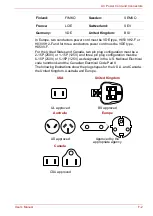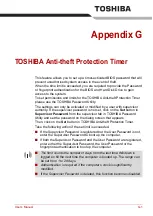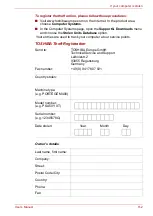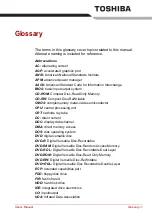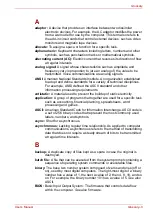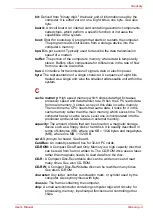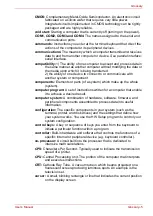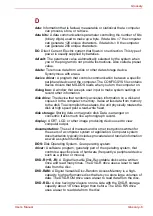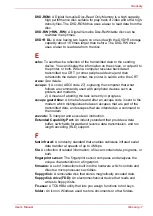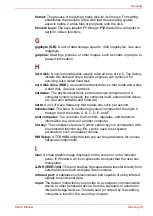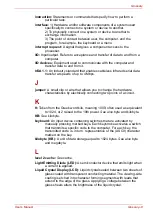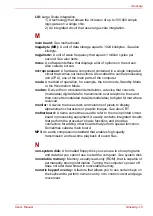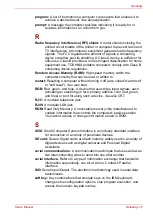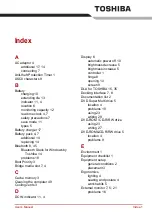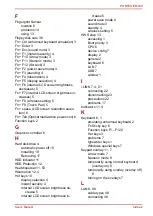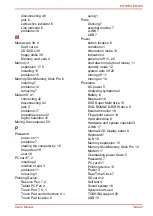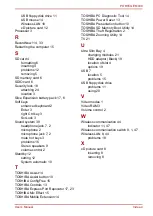
User’s Manual
Glossary--11
Glossary
O
OCR:
Optical Character Recognition (reader). A technique or device that
uses laser or visible light to identify characters and input them into a
storage device.
online state:
A functional state of a peripheral device when it is ready to
receive or transmit data.
operating system:
A group of programs that controls the basic operation
of a computer. Operating system functions include interpreting
programs, creating data files, and controlling the transmission and
receipt (input/output) of data to and from memory and peripheral
devices.
output:
The results of a computer operation. Output commonly indicates
data.
1) printed on paper, 2) displayed at a terminal, 3) sent through the
serial port of internal modem, or 4) stored on some magnetic media.
P
parallel interface:
Refers to a type of information exchange that transmits
information one byte (8 bits) at a time.
See also
serial interface.
parity:
1) The symmetrical relationship between two parameter values
(integers) both of which are either on or off; odd or even; 0 or 1.
2) In serial communications, an error detection bit that is added to a
group of data bits making the sum of the bits even or odd. Parity can
be set to none, odd, or even.
password:
A unique string of characters used to identify a specific user.
The computer provides various levels of password protection such
as user, supervisor and eject.
pel:
The smallest area of the display that can be addressed by software.
Equal in size to a pixel or group of pixels.
See
pixel.
peripheral component interconnect:
An industry standard 32-bit bus.
peripheral device:
An I/O device that is external to the central processor
and/or main memory such as a printer or a mouse.
pixel:
A picture element. The smallest dot that can be made on a display or
printer. Also called a pel.
plug and play:
A capability with Windows that enables the system to
automatically recognize connections of external devices and make
the necessary configurations in the computer.
port:
The electrical connection through which the computer sends and
receives data to and from devices or other computers.
Power Saver Utility:
A TOSHIBA utility that lets you set the parameters for
various power-saving functions.
printed circuit board (PCB):
A hardware component of a processor to
which integrated circuits and other components are attached. The
board itself is typically flat and rectangular, and constructed of
fiberglass, to form the attachment surface.
Summary of Contents for Portege M400-144
Page 10: ...User s Manual x PORTÉGÉ M400 ...

